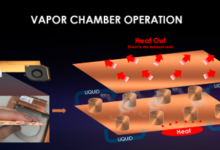0131 322 5935 Mobile Source Mapping: Tracing Regional Connections

Mobile source mapping, particularly through the analysis of numbers like 0131 322 5935, serves a pivotal role in understanding regional connections. This method allows urban planners to discern behavioral patterns and identify community disparities. However, the implications of such data collection extend beyond urban development. Ethical considerations regarding privacy and data security emerge as significant challenges. The intersection of technology and ethics prompts further exploration of how these dynamics will shape future community engagement initiatives.
The Role of Mobile Source Mapping in Regional Analysis
Although mobile source mapping may initially appear as a technical endeavor, its significance in regional analysis is profound.
This tool reveals mobile behavior patterns that highlight regional disparities, informing urban planning strategies.
However, the intersection of data privacy concerns with mobile data usage raises ethical questions.
Balancing the need for insightful analysis with individual privacy rights remains critical in shaping inclusive urban environments.
Techniques for Collecting and Analyzing Mobile Data
Collecting and analyzing mobile data requires a multifaceted approach that integrates various techniques to ensure accuracy and relevance.
Key methods include mobile tracking, spatial analysis, and data visualization, leveraging geographic information from mobile networks.
While employing robust data collection and analysis methods, it is crucial to prioritize user privacy, balancing the pursuit of insights with ethical considerations in data handling and representation.
Case Studies: Impact of Mobile Source Mapping on Local Communities
How can mobile source mapping transform local communities? By enhancing community engagement and fostering data transparency, this technology empowers residents to better understand their environment.
Case studies illustrate how mapping initiatives have led to informed decision-making in urban planning, improved public health outcomes, and increased civic participation.
Ultimately, mobile source mapping serves as a catalyst for sustainable community development and empowerment.
Future Trends in Mobile Source Mapping and Regional Connectivity
Mobile source mapping is poised to evolve significantly, shaping the future of regional connectivity.
Emerging technologies, such as artificial intelligence and blockchain, will enhance data accuracy and accessibility.
However, the integration of these advancements raises critical data privacy concerns.
Balancing innovation with individual rights will be essential to foster trust and ensure that mobile source mapping serves as a tool for liberation rather than surveillance.
Conclusion
In conclusion, mobile source mapping, epitomized by the analysis of number 0131 322 5935, stands as a beacon of insight for urban planners, illuminating unseen patterns within communities. As these techniques evolve, they promise to reshape regional connectivity, fostering more equitable environments. However, the challenge remains to navigate the labyrinthine ethical considerations surrounding data privacy. Ultimately, the successful integration of mobile data could transform urban landscapes into vibrant, interconnected ecosystems, where every individual’s voice resonates profoundly.






